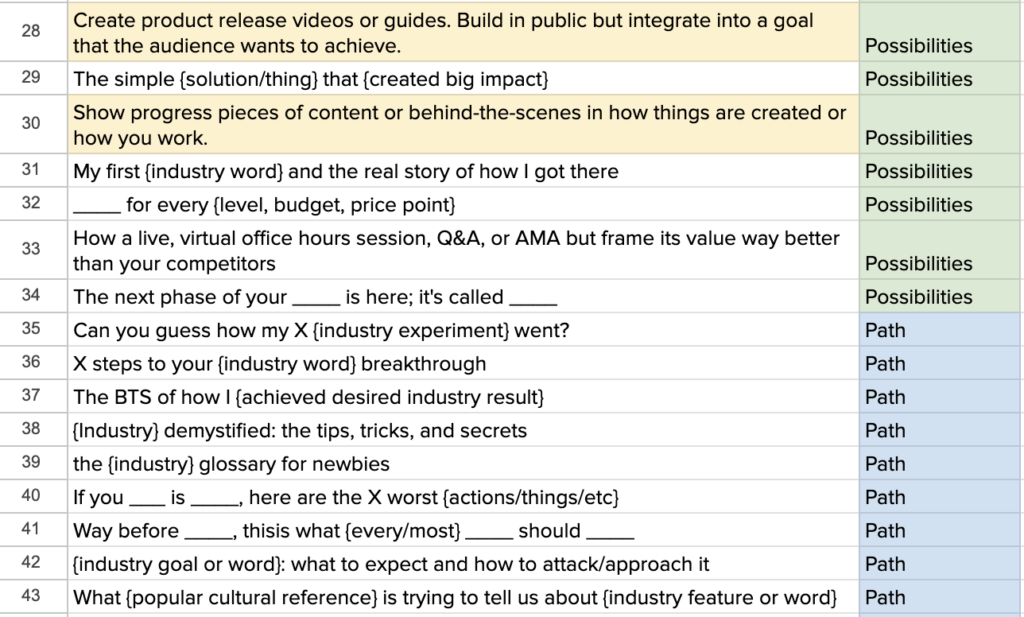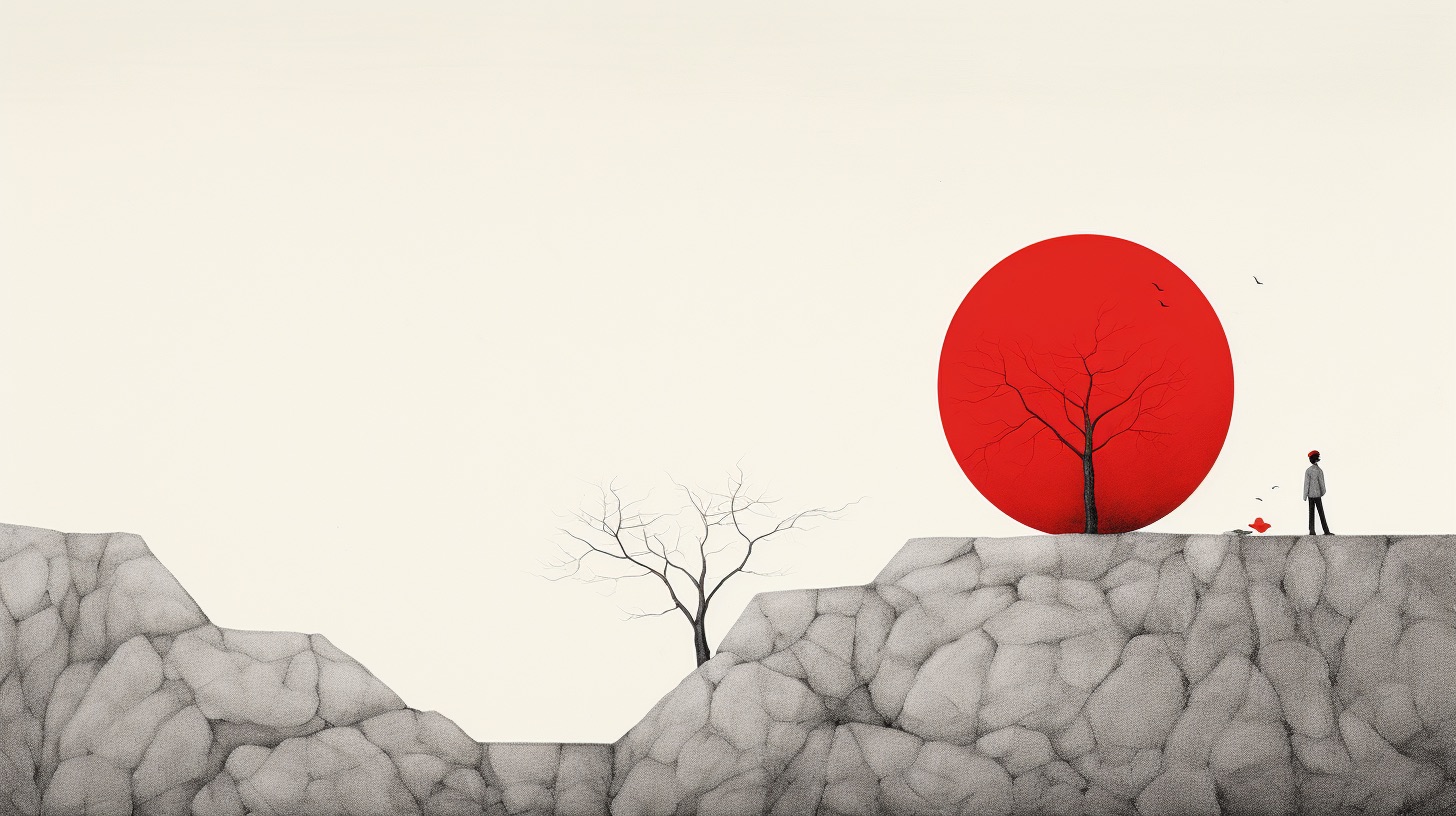Let’s paint the picture.
You hop onto LinkedIn and follow the “perfect” content strategy.
You have your templates lined up and you even have content scheduled a week out.
You’re all good.
Your posts start to roll out and they are getting some decent reception.
You continue to do this for a couple of weeks and at the end of the month you do a review.
You didn’t make any money.
It doesn’t make sense. You have the perfect offer. Your content was getting good engagement.
People were even going to the offer page.
So what gives?
Chances are you did a poor job of leading them along the Customer Journey. You did a poor job of filling in The Gap.
You Need to Understand the Gap
So what is the gap?
For this, I think it’s good to use a metaphor and directly connect it to what a Creator sells.
- Your friend tells you there is an awesome hiking trail not too far from where you live. (You see that people are quitting their jobs and making a full-time income as creators.)
- You start to hike the trail. (You begin posting on LinkedIn.)
- You come to a chasm that you need to cross. (Your posts aren’t getting engagement.)
- You want to get to the other side of the chasm. You can see the goal. (You see others succeeding so you know you also want to get engagement.)
- You find a rope that helps you cross the chasm. (You find a method that helps you write better posts and you start to get more engagement.)
In a nutshell, this is the Customer Journey.
100 people a day are going to hike that trail so each person is moving along the same path but each one is at different parts of the trail at different times.
The problem that most creators have is that they don’t have content that is useful for each part of the journey.
Instead, they either create content telling people the hiking trail exists or content that gives them the rope to cross the chasm.
Those pieces of content are only helpful to the people at those stages of the journey.
What about everyone else?
We will get to them in a second.
The Problem With Social Media Content Strategy
Almost all social media content strategy shown by the experts focuses on engagement and it makes sense.
Engagement can be measured and it looks great.
If your content isn’t getting big numbers then it’s hard to tell if it is working.
What happens on social media is that most of the posts are geared toward telling people the hiking trail exists. Those posts get crazy engagement.
So then you get more of these posts because they build up the numbers and if you get enough people then eventually you’ll make money, right?
There is logic to this.
If you can get to 100,000 followers then at least 10 of them have to be willing to buy something, right?
The problem here is that you aren’t building customers.
You need content that helps the person know the trail exists and content that helps them cross the chasm.
This isn’t the same piece of content, so you need a strategy that allows for the creation of these different types of content.
The 5 P’s of the Customer Content Journey
I like to break content up into one of five categories:
- Possibilities
- Path
- Pain
- Pre-Work
- Permission
The best content strategy allows you to create content across all five of these categories. That’s the best way to keep people within your world without having to look elsewhere.
Why does this work?
Because over time you’ll create a piece of content that is in the exact phase of the customer journey that someone in your audience is in. They’ll see the content and be amazed at how you’re speaking directly to them.
They’ll wonder how you got into their heads.
Let’s go over each of the categories.
1. Possibilities
The big-time content on social media because it can apply to everyone. It shows people what is possible.
If we go with the world-building metaphor for business, it lets people know that the world exists.
It challenges their assumptions of what they thought was possible.
It’s also the trap content.
Because it can get a ton of likes (Here is how I made $10,000 in 2 days using a paperclip) Creators tend to keep coming back to it hoping for bigger numbers.
But as they say, likes ain’t cash.
Most people don’t care about moving along the Customer Journey. They’re good just being consumers. So your best bet is to not believe that this is the content that will make you the money.
It’s why you’ll find Creators with 100,000+ followers and only making $10,000 a month.
2. Path
Here is where you present a roadmap to the next step of their journey.
If someone sees how someone made $10,000 in 2 days using a paperclip, they’ll then ask how can they do it. This is a great time to send them to a guide that goes into detail about what needs to be done.
Here is something very simple that Creators trip up on. They write a nice tweet or thread about how they accomplished something. It gets people excited and they want to know how to do it as well.
The tweet can only go into so much detail.
So what should the Creator do? Send them to a blog post where you can expand on what a person needs to do to get the same results as you.
But what do most Creators do?
Liked this tweet? Then sign up for my newsletter.
Do you see how that breaks up the flow of the Journey? If you send your email out once a week what is a person supposed to do? Wait 5 days for the answer?
What if it’s not in the newsletter? What do you do?
Anyways, be mindful of how each piece of content shouldn’t always lead to the same destination.
3. Pain Points
This type of content doesn’t do as well on social media because it is specific to the audience that has that specific problem. People that don’t have the problem won’t care about the content.
But this is also the content that I think acts as the true moneymaker.
If you believe that people only buy from you once they trust you, then this is the content that builds trust. There is nothing better you can do than help someone overcome a problem so that they can move forward.
So why is this category third on the Journey? It’s because a person can’t have a pain point until they start their journey.
That’s why it can be extremely frustrating to create content around a problem, but most people don’t care about it. You know it’s valuable and it will be helpful to anyone but if they haven’t experienced the problem yet, then it doesn’t make sense to them.
A lot of this content is best done through blog posts and YouTube videos because it’s the kind of stuff people search for. Doing it on Twitter, LinkedIn, or Instagram means that your timing has to be right to reach the people who need it.
4. Pre-Work
While Pain Points is where I believe the money is made, Pre-Work is where you build amazing customers.
Pre-Work is content that helps your audience go through the steps needed before they can use your offers effectively.
For example, it doesn’t make sense for me to try and sell you Feel Good Funnels if you don’t have an offer to sell. So maybe one day I’ll create a guide on how to create your first offer.
Then you’ll be ready to buy the course on funnels.
Pre-Work is great at helping them accomplish small wins which in turn give them the confidence to continue to move forward. One of the biggest obstacles that you must overcome to get people to buy your stuff is the question they have in their heads.
Can I really do this?
Pre-Work gives them the confidence to answer “yes” to that question.
5. Permission
This category is all-encompassing. Meaning it’s more about the messaging than the actual content.
This content lets your audience know they are being heard and that they are right in the direction they want to go.
An example for Odd Noodle would be content/messaging letting them know it’s okay to not like selling. Letting you know that makes you feel heard and you want to understand how to navigate the world better with this feeling.
Your Content Strategy
Every single piece of content that you create is part of the map that shows people how to get to the hiking trail and how to navigate it so they get to the top.
When you’re just getting started there will be gaps in your map. You can’t write all of this content in a day.

If you’re at the beginning of this Journey and you have an offer ready, then I would suggest you start with Problems and Pre-Work for the on-site content.
Possibilities and Paths should be done for social media to drive people to your site.
And make sure over time you’re able to connect pieces of content together. Remember, this is a map that you’re creating for your audience.
Not everyone wants to wait around for a newsletter in the hopes that it has the answers and nobody wants to go through your Twitter archives searching for an answer.
